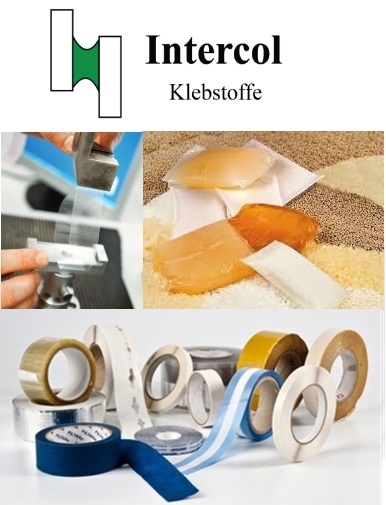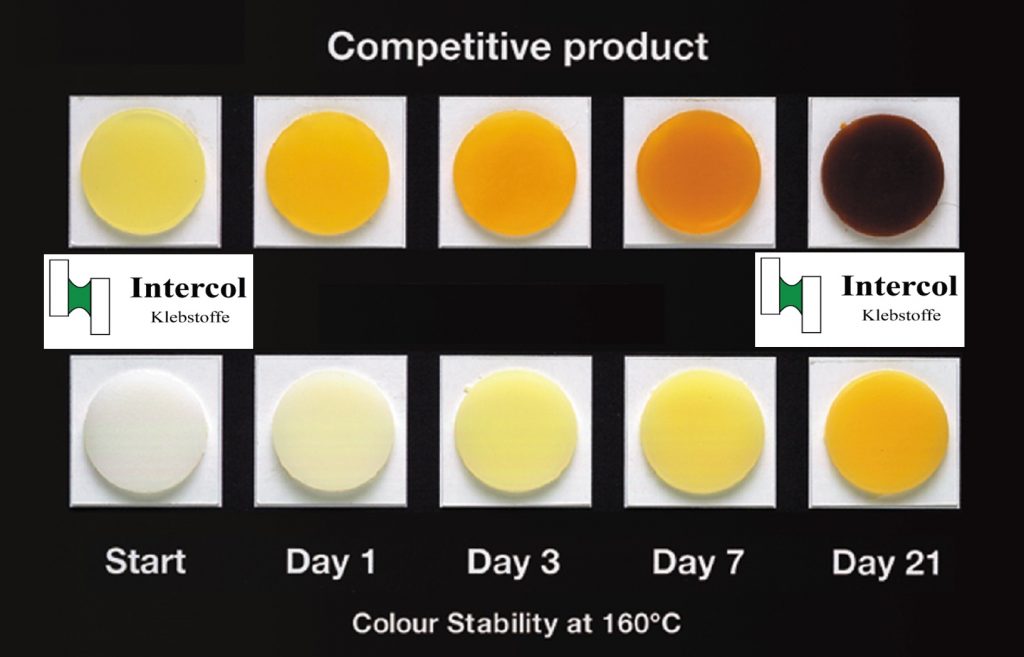Hot melt adhesives are among the most popular adhesives at Intercol. The hot melt adhesive first emerged in 1940 as an improvement on water-based adhesives that failed in humid climates, but to say it really caught on in the last few decades is an understatement. A common question we get from our customers is, “What is a hot melt adhesive?” And that is the question we will look at in more detail today.

What is a thermoplastic?
Hot melt adhesives (also known as hot melt adhesives) are generally 100% solid formulations based on thermoplastic polymers (without water or solvents). Hot melt adhesives are sold in a solid state at room temperature and are "activated" when heated above their softening point, which is usually between 50 and 160 degrees. Once melted (in a hot melt tank), the adhesive can then be applied to a substrate in its liquefied or molten state. The hot melt adhesive wets the substrate, penetrates the surface (and any cavities) and then solidifies, which ensures cohesion. This setting / cooling process takes very little time. Adhesives that cool and stay tacky are known as pressure sensitive adhesives (PSA) - we'll cover these in detail another time.
A quick-setting adhesive
When a hot melt adhesive is cooled back down to room temperature, it quickly builds up its internal strength. When solidified, a hot melt adhesive has structural integrity and can function as an adhesive. Hot melt adhesives can be applied to a substrate in a number of ways (when in liquid form), such as by using a roller or, more commonly, by spraying or spraying from a nozzle or gun. There are also many different types of application patterns such as spiral sprays, dots, and solid lines.
Application examples
Hot melt adhesives are used in many different industries for countless applications in both the commercial and private sectors. You can find hot melt adhesives in food packaging, woodworking, product assembly, labeling, children's toys, arts and crafts and so on. At Intercol, our adhesives bond all types of packagings, Book spines, layers of fabric in nonwovens, labels on bottles and frames on furniture - to name just a few applications.
PSA hot melt adhesives
Hot melt adhesives require a delicate balance of formulation components, but the main elements of a typical packaging hot melt adhesive are polymers (provides strength and flexibility), resins (provides wetting and adhesive properties) and waxes (controls viscosity and open time / cure rate). At a pressure sensitive hot melt adhesive (HMPSA) is typically a plasticizer that supports elasticity and controls viscosity.

EVA and polyolefin
There are different types of hot melt adhesives such as EVA (ethylene vinyl acetate) for general bonding, Polyolefin for hard-to-glue plastics and the more modern packaging hot melt adhesive - metallocene (mPO) for high strength in smaller quantities, but we'll cover the different hot melt formulations in a separate article.

How a hotmelt differs
Hot melt adhesives have outperformed their predecessors in many ways, which is one of the reasons they are so popular today.
One of the main reasons a hot melt adhesive is the adhesive of choice in many markets is its ease of use and lower processing costs and regulatory requirements, as well as its unmatched versatility.
Hot melt adhesives can be used to bond a wide variety of substrates, from cardboard, metal, glass, leather, and wood to ceramic, plastic, rubber, fabric, and foam. The high viscosity of a hot melt adhesive lends itself to use on both non-porous and porous substrates, which would otherwise be more difficult to bond with, for example, a solvent-based adhesive.
Thanks to factors such as their excellent water and moisture resistance (they don't weaken when exposed to moisture), hot melt adhesives create tamper-evident seals. Hot melt adhesives can therefore be used on hot, cold and wet surfaces and, being thermoplastic, they can be repeatedly heated to melt and cooled to solidify. There is no single use with a hot melt adhesive, which is often the case with other adhesives.
Replacement for solvent-based adhesives
In contrast to solvent-based adhesives, hotmelts do not lose their thickness when they solidify. Since hotmelts to 100% are solid, they only shrink minimally when they cool, which is why they are ideal for filling gaps. In comparison, solvent-based adhesives require the extraction of a carrier in order to cure, which often leads to a 50-70%igen reduction in their application weight.
